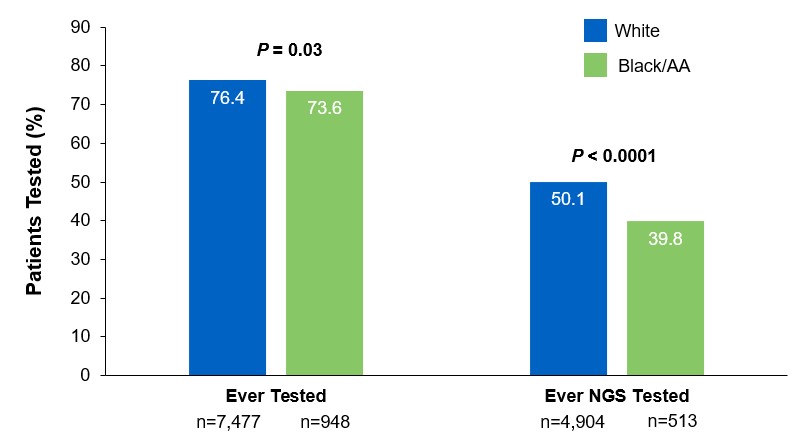SUMMARY: ColoRectal Cancer (CRC) is the third most common cancer diagnosed in both men and women in the United States. The American Cancer Society estimates that approximately 151,030 new cases of CRC will be diagnosed in the United States in 2022 and about 52,580 patients are expected to die of the disease. The lifetime risk of developing CRC is about 1 in 23.
Adjuvant chemotherapy for patients with resected, locally advanced, node-positive (Stage III) colon cancer has been the standard of care since the 1990s. Even though 80% of patients with Stage II colon cancer are cured with surgery alone, adjuvant chemotherapy is recommended for patients who have Stage II colon cancer with high-risk clinicopathological features, including tumor penetration of the serosa (T4 disease). However, the benefit of adjuvant chemotherapy for patients with Stage II disease remains unclear, with less than 5% of patients benefitting from adjuvant chemotherapy. There is therefore an unmet need for more precise markers to predict risk of recurrence after surgery for Stage II colon cancer, other than clinicopathological risk factors, and thus avoid exposure to unnecessary chemotherapy.
Circulating Tumor DNA (ctDNA) refers to DNA molecules that circulate in the bloodstream after cell apoptosis or necrosis, and can be detected in the cell-free component of peripheral blood samples (Liquid Biopsy) in almost all patients with advanced solid tumors including advanced colorectal cancer. ctDNA is a valuable biomarker and is directly evaluated for evidence of Minimal Residual Disease and allows early detection of relapse. Several studies have shown that detectable ctDNA following curative intent surgery for early stage cancers, including those with Stage II colon cancer, is associated with a very high risk of recurrence (more than 80%) without further adjuvant therapy. It has remained unclear whether adjuvant treatment is beneficial for these ctDNA-positive patients who are at high risk for recurrence.
The Circulating Tumor DNA Analysis Informing Adjuvant Chemotherapy in Stage II Colon Cancer (DYNAMIC) trial is a randomized trial designed to investigate whether a ctDNA-guided treatment approach could reduce the use of adjuvant treatment without compromising the risk of recurrence, as compared with a standard approach in patients with Stage II colon cancer. The researchers also evaluated outcomes among ctDNA-positive patients who received adjuvant chemotherapy, to assess the benefit of treating this high-risk group of patients, as well as outcomes among ctDNA-negative patients whose disease was managed by surveillance alone. In this Phase II, multicenter, randomized, controlled trial of biomarker-driven adjuvant therapy, 455 patients with resected, histologically confirmed, Stage II (T3 or T4, N0, M0) colon or rectal adenocarcinoma with negative resection margins, were randomly assigned in a 2:1 ratio to have their disease managed according to ctDNA results-ctDNA-guided management group (N=302) or managed by the treating clinician according to standard clinicopathological criteria-standard management group (N=153). Plasma specimens were obtained for ctDNA analysis from all patients at week 4 and week 7 after surgery. For patients assigned to ctDNA-guided management, week 4 and week 7 specimens were analyzed concurrently, and ctDNA results were made available to the treating clinician 8 to 10 weeks after surgery. Patients with a positive ctDNA result at either week 4 or week 7 received adjuvant single-agent fluoropyrimidine or Oxaliplatin-based chemotherapy, with the treatment regimen chosen at the treating physician’s discretion. Patients with negative ctDNA results at both week 4 and week 7 were not treated with adjuvant chemotherapy. In the standard management group, all treatment decisions were based on conventional clinicopathological criteria. This trial used a ctDNA assay specifically designed for detection of Minimal Residual Disease with very high sensitivity (a variant allele frequency limit of detection as low as 0.01%), as well as serial blood samples for ctDNA analysis to decrease the risk of a false negative result. In this study, ctDNA probes were personalized on the basis of specific mutations identified in tumor tissue.
Enrolled patients had an ECOG PS of 0-2 and had to be medically eligible to receive adjuvant Oxaliplatin-based or single-agent fluoropyrimidine chemotherapy. Patients were stratified according to tumor stage (T3 or T4) and patients with evidence of macroscopic metastatic disease on CT of the chest, abdomen, and pelvis performed within 8 weeks before enrollment, presence of synchronous primary colorectal cancer, or treatment with neoadjuvant chemoradiotherapy, were excluded. Patients were enrolled within 3 weeks following surgery, and an adequate resected tumor specimen had to be provided for mutation analysis by 4 weeks after surgery. The treatment groups were well balanced, the median age of the patients was 64 years, 85% of patients had T3 disease, 15% had T4 disease, and 5% had a lymph node yield of less than 12. Clinical high risk disease was defined as one or more of the following clinicopathological risk features: T4 lesion, poor tumor differentiation, lymph node yield less than 12, lymphovascular invasion, tumor perforation, or bowel obstruction, in association with a proficient mismatch-repair tumor, which was present in 40% of patients. The Primary efficacy end point was noninferiority of ctDNA-guided management to standard management with regards to 2-year Recurrence Free Survival (RFS). A key Secondary end point was to determine whether fewer patients would receive adjuvant chemotherapy with the ctDNA-guided approach.
At a median follow up of 37 months, the 2-year RFS was 93.5% with ctDNA-guided management and 92.4% with standard management, meeting the noninferiority criterion. Further, a lower percentage of patients in the ctDNA-guided group received adjuvant chemotherapy than in the standard-management group (15% versus 28%).
The authors concluded that a ctDNA-guided approach to the treatment of Stage II colon cancer reduced adjuvant chemotherapy use without compromising Recurrence Free Survival. Studies are underway assessing the role of escalated chemotherapy in ctDNA-positive patients and deescalation of chemotherapy in ctDNA-negative patients with Stage II colorectal cancer.
Circulating Tumor DNA Analysis Guiding Adjuvant Therapy in Stage II Colon Cancer. Tie J, Cohen JD, Lahouel K, et al. for the DYNAMIC Investigators. N Engl J Med 2022; 386:2261-2272




